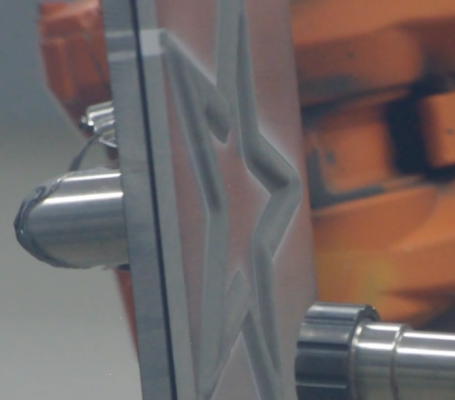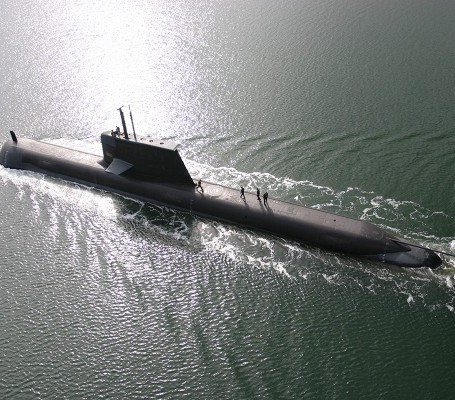Australia’s geographical remoteness, lengthy coastlines, and vast maritime jurisdiction historically led the country to rely on its maritime industry, which includes oil and gas extraction and exploration, fishing and aquaculture, and water freight transport for its exports. As an integral part of Australia’s maritime strategy and national security, government officials have expressed their desire for ‘an enduring and potent submarine capability’ critical to its national security, especially considering that around half of the world’s submarines are expected to operate in the Indo-Pacific region by 2035.
This particular discovery by the Department of Defence in 2016 is what led the country to a sizable commitment to spend over 60 million dollars (A$90 million) on a fleet of 12 new submarines. However, these submarines will not be ready for at least 10 more years, so the government will be forced to upgrade its six Collins-class submarines to continue operating beyond their planned retirement date of the mid-2020s.
During the next few years, the Royal Australian Navy (RAN)’s Collins-class submarines will demand maintenance and 3D printing could revolutionize their upkeeping with a pioneering additive manufacturing process for in-situ repairs of damaged metal components. Known as cold spray, its development for this specific maritime application would allow Australian submarines to remain at sea for longer, without the need to dock for lengthy repairs. If successful, the technology could change shipboard repair worldwide.
Being developed by ASC, Australia’s government business dedicated to submarine sustainment and naval shipbuilding, along with Australia’s national science agency, CSIRO, and DMTC Limited (formerly, the Defence Materials Technology Centre), the partnership aims to pioneer the use of additive manufacturing for the repair of Collins-class submarines, the second-largest non-nuclear powered submarines in the world.
Cold spray is an additive manufacturing and repair method that uses a stream of supersonic gas to accelerate metal powder particles at a surface, building up a dense deposit. The innovative process occurs below the melting temperatures of the metals involved, which avoids damaging the structural integrity of the components and surrounding area.
“CSIRO and ASC have been working together for a number of years, exploring ways to use cold spray of nickel to repair corrosion,” described Peter King, research team leader at CSIRO. “CSIRO has spearheaded the adoption of cold spray by Australian industry since first introducing the technology 18 years ago. We have developed unique cold spray-based solutions for the printing industry, aerospace, rail and for combating marine biofouling. The team is focussed on working closely with local companies to develop new intellectual property for Australia and to deliver on national missions such as building sovereign capability.”
Headquartered in Osborne, South Australia, ASC was chosen in 1987 as the prime contractor for the design, manufacture and delivery of the six diesel-electric Collins-class submarine fleet, and has remained responsible for much of its maintenance.
“It’s vitally important for ASC to be on the cutting edge of submarine sustainment innovation, to continually improve Australia’s submarine availability to the Royal Australian Navy service,” said ASC’s CEO Stuart Whiley. “The use of additive manufacturing for the repair of critical submarine components, including the pressure hull, will mean faster, less disruptive repairs for our front line Collins Class submarine fleet.”
According to ASC, the two-year project seeks to deliver breakthroughs in submarine repair and cost-of-ownership reductions for the RAN, through expert contributions from industrial and research partners. The project will see ASC engineers working with CSIRO’s Lab22 research facility for additive manufacturing of metals in Melbourne to develop portable equipment for in-situ repair in the confines of a submarine.
Once successfully proven and certified, ASC claims it will be licensed to use the cold spray technology to support its work as Australia’s submarine sustainment organization, primarily to support the Collins-class submarine fleet.
DMTC Chief Executive Officer Mark Hodge welcomed the commencement of the new project stating, “This project builds on the relationship between ASC and CSIRO since 2015 but will also leverage DMTC’s long history in developing cold spray as a repair technology for defence applications. Our work to date has mainly focused on the aerospace domain, but we are now looking to apply that to submarines and other defence applications.”
Even though life aboard a Navy submarine, and how they are used in national defense is kept in relative secret, what we know for certain is that even though they generally stock a 90-day supply of food to spend three months underwater, surfacing for navigational fixes is quite common. Moreover, now that the Collins submarines are slated to be in operation through the mid-2030s with a current cycle that needs two deployable submarines consistently available to the Navy, shorter-term fixes and in-situ repairs could become an important commodity. As ASC reinforces its new maintenance technique to keep up Australia’s frontline defense capabilities, the cold spray 3D printing process could completely modify how submarines and other vessels are repaired on-site, with minimal downtimes and cost-effective fast turnarounds.
Subscribe to Our Email Newsletter
Stay up-to-date on all the latest news from the 3D printing industry and receive information and offers from third party vendors.
You May Also Like
Gorilla Sports GE’s First 3D Printed Titanium Cast
How do you help a gorilla with a broken arm? Sounds like the start of a bad joke a zookeeper might tell, but it’s an actual dilemma recently faced by...
Nylon 3D Printed Parts Made More Functional with Coatings & Colors
Parts 3D printed from polyamide (PA, Nylon) 12 using powder bed fusion (PBF) are a mainstay in the additive manufacturing (AM) industry. While post-finishing processes have improved the porosity of...
$25M to Back Sintavia’s Largest Expansion of Metal 3D Printing Capacity Since 2019
Sintavia, the digital manufacturing company specializing in mission-critical parts for strategic sectors, announced a $25 million investment to increase its production capacity, the largest expansion to its operations since 2019....
Velo3D Initiates Public Offering in a Bid to Strengthen Financial Foundations and Drive Future Growth
Velo3D (NYSE: VLD) has been among a number of publicly traded 3D printing firms that have attempted to weather the current macroeconomic climate. After posting a challenging financial report for 2023,...


































